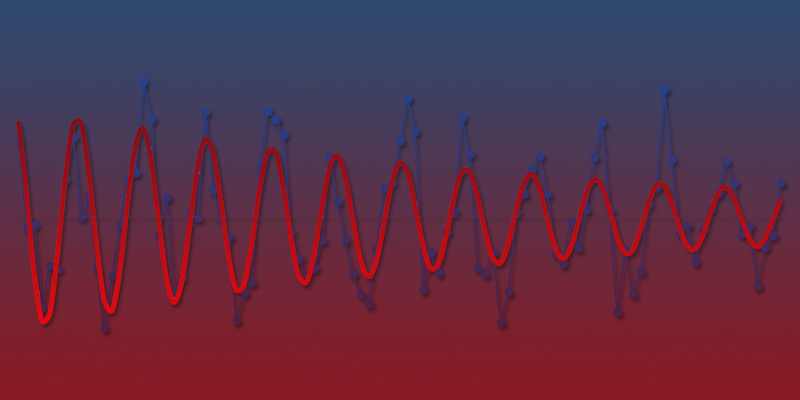In Cyanobacteria, HIP1 Does the Wave

The octamer GCGATCGC is hyper-abundant in most cyanobacterial genomes, as its name, Highly Iterated Palindrome 1 (HIP1), suggests. In some genomes, the frequency of HIP1 is more than 100 times greater than expected by chance. This high abundance suggests that HIP1 plays an important role in cyanobacterial biology. Yet 20 years of study have not revealed whether HIP1 has a function, much less what that function might be. A new study from the Durand lab provides a clue.
In the March 16 issue of Nucleic Acids Research, Minli Xu and Dannie Durand, in collaboration with Jeffrey Lawrence at the University of Pittsburgh, report that HIP1 abundance is maintained by selection rather than being continually replenished by neutral processes. Since HIP1 is under selection, HIP1 must provide a function. Xu and colleagues further showed that HIP1 is distributed periodically along cyanobacterial chromosomes, with periods on the order of tens of kilobases. This is comparable in scale to chromosomal structural units described in other bacteria, suggesting that HIP1’s function may be associated with chromosomal packing.
Packing a chromosome into a cell that is 1000 times smaller is no mean feat. The compacted chromosome, called a nucleoid, must fit in the cell, but still allow for gene transcription, DNA replication, and cell division to proceed in an orderly and efficient manner. In Escherichia coli, this is achieved by 10 to 20 DNA binding proteins, called nucleoid-associated proteins (NAPs). However, most NAPs are only found in E. coli and its closest relatives, the protobacteria. Since these NAPs are not encoded in cyanobacterial genomes, cyanobacteria must have different, as yet undiscovered chromosome compaction mechanism.
What shapes cyanobacterial genomes? We don’t know. But the periodic distribution of HIP1 gives us a place to start looking.
Selection, periodicity and potential function for Highly Iterative Palindrome-1 (HIP1) in cyanobacterial genomes M. Xu, J. G. Lawrence, D. Durand. Nucleic Acids Research, Volume 46, Issue 5, 16 March 2018, Pages 2265-2278, https://doi.org/10.1093/nar/gky075


